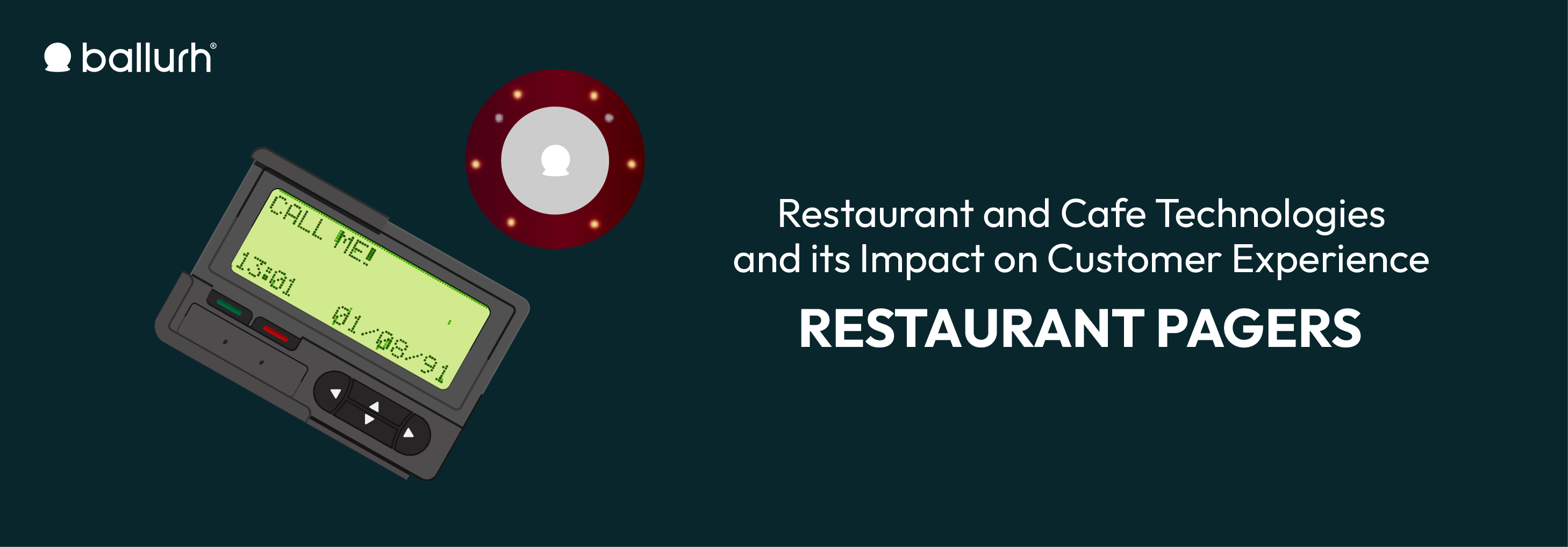
You visit a restaurant or café, and at first glance it seems that the place is not crowded, and the sounds of customer’s conversations are a bit low, and the receptio
n area isn’t full of customers, so you conclude that the place is most likely vacant! However, when you approach the reception, you’ll be placed on a waiting list by a hand held small device, to alert you when your order will be ready.
Wireless pagers or Beepers are a technology that the restaurants have increased its usage in recent years, with one goal: (creating a positive customer experience from the moment of entry until exit).
Wireless pagers were invented in 1950 by engineer and inventor Al Gross. They were used at that time exclusively among medical staff. It hadn’t been used in restaurants and cafes until 1992, and two years later the version of wireless pagers that we know today appeared in the market. Small rounded device about the size of the palm of your hand, which could be linked to a custom code that sends a notification either in the form of a flash or a buzz.
Wireless pager technology began to gain popularity between fast food restaurants, then used in fine dining restaurants, then used in multiple purposes until it became essential to all roles of operating and managing restaurants and cafes. It usage varies between:
It connects the front-of-house staff with the back-of-house staff, and is usually used in large restaurants where the staff members have less contact with each other, in order to improve communication.
It connects the customer directly with the waiter, and allows him to request a service easily by pressing a button. The procedure could have different uses according to a certain manufacturer. In most cases, it is a single button that flashes after the customer presses it, and the waiter proceeds to serve the table. Sometimes there is a button designated for each order, examples of which include: a button which indicates the readiness to order, a request to help button, a button to indicate the customer is requesting a bill, and other uses.
It is the most common type, which is to link the reception with the customer directly. If a suitable table is not available, the customer is placed on the waiting list and handed over a pager that is linked to a specific code until a table is available for seating. It is also used in self-service restaurants, where an alert is sent to the customer when the order is ready to be received.
(It is possible to add a visual element here, which might be a simple infographic explaining each type of device)

There are many reasons that made restaurant owners use a wireless pager within their operations, some of them are the following
It is also mentioned that in the 1920s, restaurant owners in Western countries relied on the idea of advance reservations, which led to a repeated No-shows on the waiting list, which means customers made a reservation and did not attend, and this problem led to an increase in the number of people on the waiting list, despite the fact that there were many empty tables.
In addition to the mess that occurs in organizing raw material inventory and labor coordination, for example: a restaurant has a capacity which serves 50 people approximately, and a third of these tables are reserved. Therefore, the inventory will be prepared and shifts will be arranged among workers according to this particular reservation list.
To solve this problem, many restaurants canceled the procedure of reservations and started following a method of an actual waiting list for people who are actually present. Adopting an inventory based on customer consumption data during the previous periods, and wireless pagers technology made it possible to measure actual data.
Despite the impact made by wireless pager technology, it has faced some criticism from restaurant owners for several reasons, such as the following:
Text messaging is one of the new solutions to avoid the problems that might occur with wireless pagers. As it does not require a metric range, and it has less expenses. All you need is to acquire the customer’s contacts into a database to communicate through a text message to notify as soon as there is a suitable table available.
It is worth noting that wireless pagers and notifications via mobile messages are only a minor adjustment of the possible digital capabilities which restaurant owners have. To increase growth opportunities in a sector that is considered one of the most competitive sectors today.
Therefore, the Business Intelligence platform Ballurh came into being, to provide restaurant owners with the technological tools required to keep up with the growth possibilities.
One of the distinctive features of Ballurh’s system is the “Proactive Analysis”, which sends personalized messages on the WhatsApp application directly to the restaurant owner, with predictions which are concluded from Proactive Analysis of the existing data, in a real-time reading of the operation, to notify the admin about an anticipated change that needs to be considered, like the consumption pattern of a specific product for example. A Proactive Analysis could also expect the status of a stock running out, a change in the customer’s behavioral pattern or a change in peak times. Being aware of the unexpected could assist in taking the necessary measures.
For more information about Ballurh’s Proactive Analysis feature and its use in your facility, contact the Business Success Team through the following 920031412.